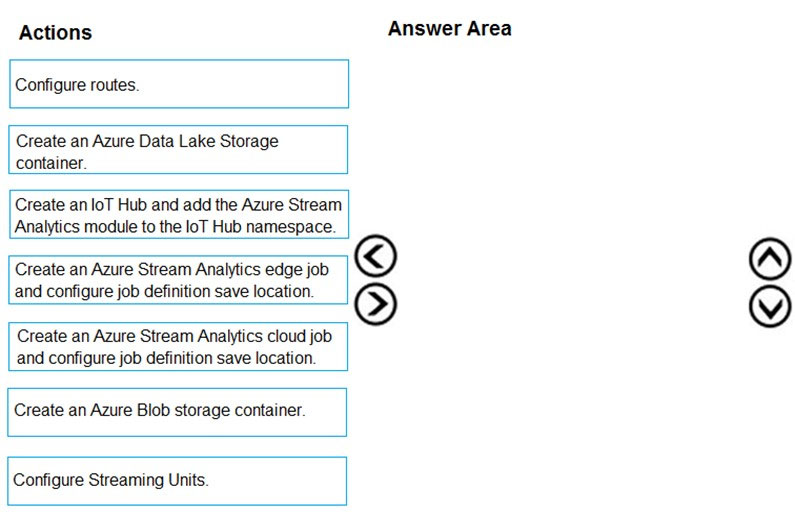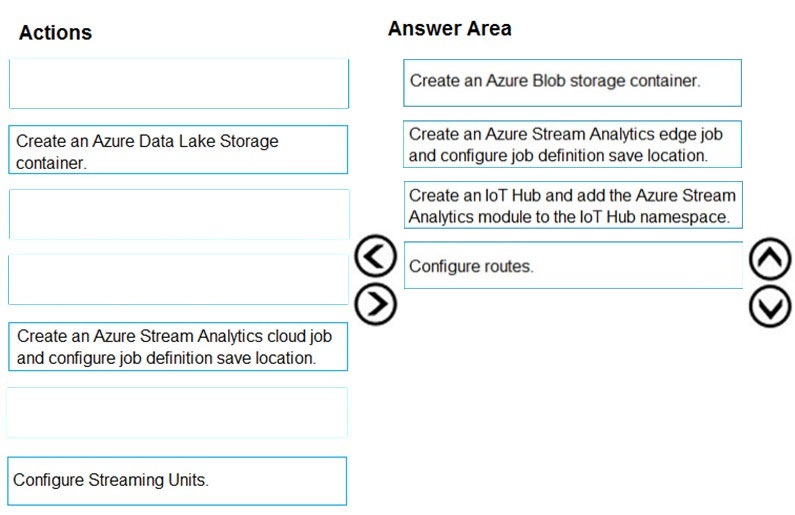

DRAG DROP -
You develop data engineering solutions for a company.
You need to deploy a Microsoft Azure Stream Analytics job for an IoT solution. The solution must:
✑ Minimize latency.
✑ Minimize bandwidth usage between the job and IoT device.
Which four actions should you perform in sequence? To answer, move the appropriate actions from the list of actions to the answer area and arrange them in the correct order.
Select and Place:

SAMBIT
Highly Voted 5 years, 2 months agodev2dev
4 years, 2 months agoBillybob0604
2 years, 4 months agoSasidhar39
3 years, 11 months agoAlekx42
3 years, 11 months agoAmbujinee
3 years, 11 months agokova123
Highly Voted 4 years, 7 months agoWendy_DK
Most Recent 4 years agoLolo_alzin19
4 years, 1 month agosyu31svc
4 years, 5 months agoArsa
4 years, 8 months agodumpsm42
4 years, 4 months agocadio30
3 years, 11 months agocadio30
3 years, 11 months agokrisspark
4 years, 9 months agosandGrain
4 years, 7 months agoLeonido
5 years agowyxh
4 years, 11 months agoAmitkhanna
5 years, 1 month agojdpl
5 years, 1 month ago